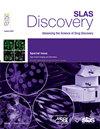细菌细胞骨架、杆状细胞和分裂系统的药物研究综述。
IF 2.7
4区 生物学
Q2 BIOCHEMICAL RESEARCH METHODS
引用次数: 0
摘要
细菌感染和抗生素耐药性仍然对全球健康构成重大威胁,每年有数百万人因此死亡。预测与抗菌药物耐药性有关的死亡在未来几年可能达到惊人的比例,加上目前干预措施的缺点,突出表明需要新的药物靶点、新型抗生素以及修订战略和政策行动。细菌细胞骨架、杆状细胞和分裂系统(BCRDs)在细胞中起着至关重要的作用,并作为许多潜在治疗靶点的储备。bcrd的组成部分具有不同的功能,但具有一些共同的蛋白质和相互关联的作用,这表明利用抗生素的协同、多治疗和多药理作用来减轻细菌耐药性的可能性。不幸的是,bcrd中的药物靶点很少得到验证,细菌对抑制剂和已批准的抗生素的耐药性对卫生和制药行业构成了挑战。本文简要而全面地概述了bcrd的药物治疗,强调了功能关系和药物潜力,验证的靶点,抑制剂,挑战,干预措施,前景,观点和未来的方向,旨在重振研究和克服该领域的瓶颈。总的来说,所提出和讨论的材料可以促进新的治疗靶点的识别和验证,新的临床药物的发现和开发,以及战略和政策干预的修订,以加强对抗生素耐药性的斗争。本文章由计算机程序翻译,如有差异,请以英文原文为准。
An overview of drugging the bacterial cytoskeleton, rod, and divisome systems
Bacterial infections and antibiotic resistance remain significant threats to global health, with millions of related deaths recorded annually. Projections that antibacterial resistance-related deaths could reach alarming proportions in the coming years, along with the shortcomings of current interventions, highlight the need for new drug targets, novel antibiotics, and revised strategies and policy actions. The bacterial cytoskeleton, rod, and divisome systems (BCRDs) perform vital cellular roles and serve as a reserve of numerous potential therapeutic targets. The components of the BCRDs play different roles but share some relationships, suggesting the possibility of exploiting synergistic, polytherapeutic, and polypharmacological effects with antibiotics to mitigate bacterial resistance. Unfortunately, few drug targets within the BCRDs have been validated, and bacterial resistance to the inhibitors and approved antibiotics poses a challenge to the health and pharmaceutical industries. This review provides a concise but comprehensive overview of drugging the BCRDs, emphasizing the relationships and druggable potentials, validated targets, inhibitors, challenges, interventions, prospects, perspectives, and future directions geared toward reinvigorating research and overcoming bottlenecks in the sector. Overall, the material presented and discussed could facilitate the identification and validation of new therapeutic targets, the discovery and development of novel clinical drugs, and the revision of strategies and policy interventions to augment the fight against antibiotic resistance.
求助全文
通过发布文献求助,成功后即可免费获取论文全文。
去求助
来源期刊

SLAS Discovery
Chemistry-Analytical Chemistry
CiteScore
7.00
自引率
3.20%
发文量
58
审稿时长
39 days
期刊介绍:
Advancing Life Sciences R&D: SLAS Discovery reports how scientists develop and utilize novel technologies and/or approaches to provide and characterize chemical and biological tools to understand and treat human disease.
SLAS Discovery is a peer-reviewed journal that publishes scientific reports that enable and improve target validation, evaluate current drug discovery technologies, provide novel research tools, and incorporate research approaches that enhance depth of knowledge and drug discovery success.
SLAS Discovery emphasizes scientific and technical advances in target identification/validation (including chemical probes, RNA silencing, gene editing technologies); biomarker discovery; assay development; virtual, medium- or high-throughput screening (biochemical and biological, biophysical, phenotypic, toxicological, ADME); lead generation/optimization; chemical biology; and informatics (data analysis, image analysis, statistics, bio- and chemo-informatics). Review articles on target biology, new paradigms in drug discovery and advances in drug discovery technologies.
SLAS Discovery is of particular interest to those involved in analytical chemistry, applied microbiology, automation, biochemistry, bioengineering, biomedical optics, biotechnology, bioinformatics, cell biology, DNA science and technology, genetics, information technology, medicinal chemistry, molecular biology, natural products chemistry, organic chemistry, pharmacology, spectroscopy, and toxicology.
SLAS Discovery is a member of the Committee on Publication Ethics (COPE) and was published previously (1996-2016) as the Journal of Biomolecular Screening (JBS).
 求助内容:
求助内容: 应助结果提醒方式:
应助结果提醒方式:


